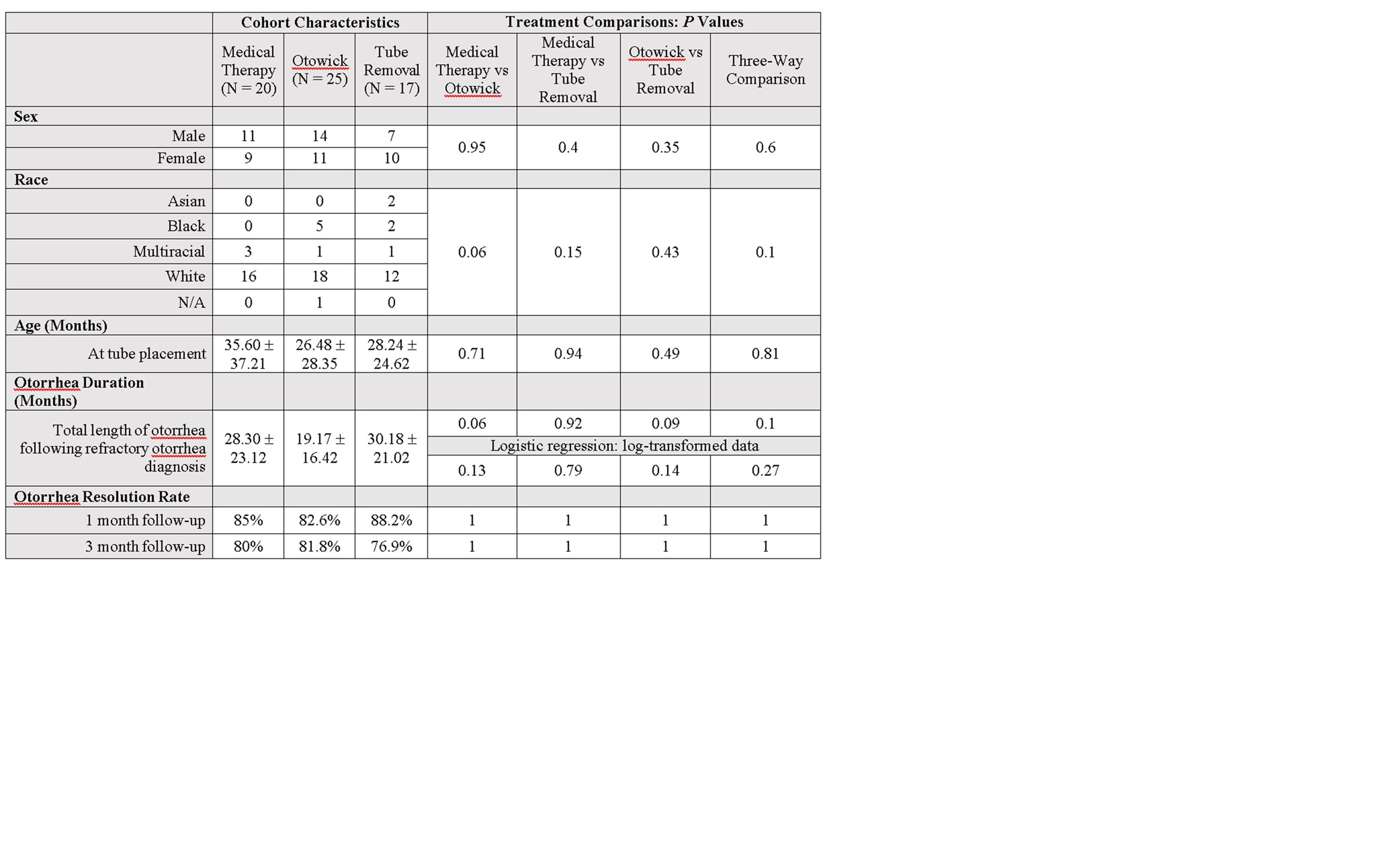Head & Neck Institute Outcomes
Pediatric Otolaryngology
Use of Otowicks to Manage Refractory Otorrhea
Tympanostomy tube placement is the most common pediatric surgery in the US, accounting for almost 10% of all surgeries. For these patients, tympanostomy tube otorrhea occurs frequently, in 16% of patients within 4 weeks of surgery and 26% of patients at any time that the tube is in place. Cleveland Clinic’s Pediatric Otolaryngology evaluated the rates of resolution and antibiotic use for refractory otorrhea with medical therapy, tube removals with or without replacements, and otowick placements. The study evaluated all pediatric patients with a history of tympanostomy tube placement and refractory otorrhea between 2017 and 2022. Sixty-two patients met inclusion criteria for this study.
Comparison of Otorrhea Episodes Across Intervention Groups (N = 62)
2017 - 2022

The study found that there was no statistically significant difference in total duration of otorrhea or rates of resolution among the different management options. The study concluded that medical therapy alone or otowick use can reduce need for tube removals and the associated risk of surgery and anesthesia. Further studies with larger cohorts are needed to elucidate if otowicks are superior to medical therapy alone in reducing duration of otorrhea.
